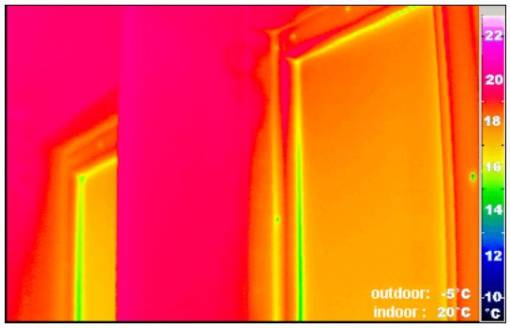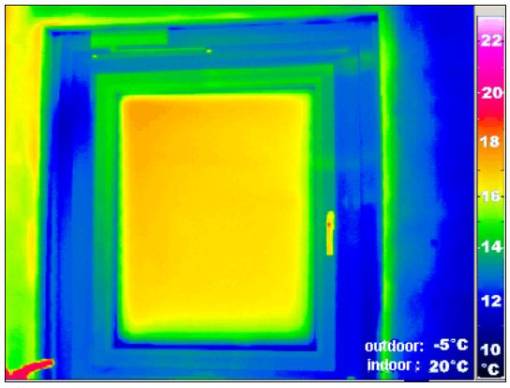Table of Contents
Thermal comfort parameters
Many subjective perceptions determine living comfort, even the colour of the surroundings plays a certain role – particularly for the mood of person who thereby expresses his or her perceptions. Living comfort mainly depends on the “thermal comfort”. This has been well-researched and the results have been incorporated into international standards (DIN ISO 7730). A large part of the information available to us today is due to the work of the Danish scientist P. O. Fanger (Wikipedia Seite).
In Passipedia we also have a comprehensive explanation of Fangers comfort research and ISO 7730 for those interested in the scientific background [5],[6].

Optimal thermal comfort is established when the heat released by the human body is in equilibrium with its heat production. Fanger's comfort equation is derived from this fact. It creates a relationship between the activity (e.g. sleeping, running…) and clothing as well as the determining factors for the thermal surroundings, which are as follows:
- air temperature
- the temperature of the surrounding surfaces, this can also be summarised as the “radiant temperature”,
- air speed and turbulence
- air humidity.
There is a complete range of combinations of these four comfort factors where the level of comfort is very good, this is known as the comfort range. It can be determined by Fanger’s equation, documented in ISO 7730 (see also Fangers comfort equation). Furthermore, according to this standard it is essential that
- the sultriness limit in relation to the air humidity is not exceeded,
- air speeds are within closely defined limits (for speeds under 0.08 m/s, the number of dissatisfied due to draughts is less than 6%)
- the difference between radiant temperature and air temperature remains small,
- the difference in the radiant temperature in various directions remains small (less than 5 °C, known as the “radiation temperature asymmetry”),
- the indoor air temperature stratification is less than 2 °C between the head and ankles of a seated person,
- the perceived temperatures in the room change by no more than 0.8 °C at different locations.
Regarding the last point, P.O. Fanger writes: “the more irregular the thermal field in a room is, the greater the expected number of dissatisfied people.”
What does this have to do with the Passive House?



It is exciting that by the requirements of the passive house standard all comfort criteria are automatically optimally fulfilled - substantially improving the thermal insulation simultaneously improves thermal comfort. This can be understood as follows:
- By improving thermal insulation (regardless of which external building building component, e.g. wall, roof, floor, etc.) the heat flow from the inside to the outside is reduced.
- Therefore the heat flow of the room area to the interior surface of this external building component is also reduced. That heat flow has to flow through the thermal film coefficinet of the surface (radiation and convection).
- The smaller heat flow implies a resultant smaller drop of temperature over this thermal resistance. In other words:
- There is a smaller temperature difference between the room area (the surfaces in the area and the room air) and the interior surface of the well insulated building component.
The practical consequence: With highly insulating external construction components, the temperature of the interior surface is only slightly different from the other indoor temperatures; this applies both in summer and winter. In the winter, the interior surfaces of the external construction components are comfortably warm (external walls, roofs etc. at the most 1 °C lower than the ambient temperature, window surfaces maximally 3 to 3.5 °C below [ 1 ]). The definition of “Passive House quality” windows is straightforward: The insulating efficiency of a window suitable for Passive Houses must be so good that under the coldest design conditions, the equation:
θair - θsurf ≤ 3.5 °C
still holds true. These small temperature differences have the following effects on the comfort criteria:
- Indoor air speeds (apart from leaks) are created by free convection at cooler surfaces. Due to the small temperature differences the convective currents, and consequently air speeds, are now very small. Fig. 1 in the left column shows a CFD (Computational Fluid Dynamic) simulation result: There is no draft in the room, even without a heating element under the window.
- If the external surface temperature is not more than 3.5 °C below the ambient temperature, then the radiant temperature difference in different directions cannot be greater than 3.5 °C. The thermography photographs in Fig. 3 to Fig. 5 show the difference between windows of various insulating quality.
- The room air temperature stratification between the head and feet of a sitting person is less than 2 °C - however only under the condition that the effective median U-value of the external building components is under 0.85 W/(m²K). See Fig. 2 in the left column.
- The percieved temperature varies less than 0.8 °C within the area.
Because all of the comfort criteria are fulfilled, without the need for a compensatory radiation heating surface, everythere in the Passive House there is “automatically” a radiant heat climate, independently of how the heat is supplied. More still: since there are no large temperature differences, air movement remains small. The results represented here are documented in the publication [ 1 ].
The comfort characteristics of well insulated buildings can be observed in practice and is confirmed by three independent research results:
- Thermography photographs and air temperature and speed measurements in passive houses confirm experimentally the results presented here. [ 2 ]
- Physiological measurements of Bernhard Lipp documenting the comfort feeling. [ 3 ]
- Sociological questionings of a sample group of inhabitants revealed good remarks about well insulated buildings. [ 4 ]
See also
References
[ 1 ] Pfluger, R.; Schnieders, J.; Buyer, B.; , W. Feist: Highly insulating window systems: Investigation and optimization in the installation (appendix to interim report A),
[ 2 ] Schnieders, J.; Betschart, W.; , W. protects: Room air currents in the passive house: Measurement and simulation HLH 03-2002, page 61
[ 3 ] Lipp, B. and Moser, M.: Heating systems and comfort: Is comfort physiologically measurable? in: AkkP proceedings NR. 25, Darmstadt, 2004
[ 4 ] Hermelink, Andreas: Do desires become true? Temperatures in passive houses for tenants; in: AkkP proceedings NR. 25, Darmstadt, 2004
[ 5 ] DIN EN ISO 7730: Gemäßigtes Umgebungsklima (Moderate thermal environments); Beuth Verlag, Berlin 1987.
[ 6 ] Fanger, P.O.: Thermal Comfort. Analysis and Applications in Environmental Engineering; USA: New York 1972, © P.O. Fanger 1970.

